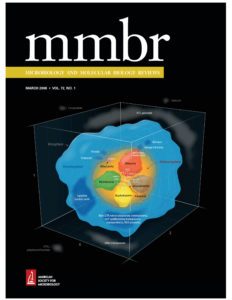Link to Pubmed [PMID] – 34468181
Link to DOI – 10.1128/MMBR.00193-20
Microbiol Mol Biol Rev 2021 Sep; 85(4): e0019320

Originally, viruses were defined as miniscule infectious agents that passed through filters that retain even the smallest cells. Subsequently, viruses were considered obligate intracellular parasites whose reproduction depends on their cellular hosts for energy supply and molecular building blocks. However, these features are insufficient to unambiguously define viruses as they are broadly understood today. We outline possible approaches to define viruses and explore the boundaries of the virosphere within the virtual space of replicators and the relationships between viruses and other types of replicators. Regardless of how, exactly, viruses are defined, viruses clearly have evolved on many occasions from nonviral replicators, such as plasmids, by recruiting host proteins to become virion components. Conversely, other types of replicators have repeatedly evolved from viruses. Thus, the virosphere is a dynamic entity with extensive evolutionary traffic across its boundaries. We argue that the virosphere proper, here termed orthovirosphere, consists of a distinct variety of replicators that encode structural proteins encasing the replicators’ genomes, thereby providing protection and facilitating transmission among hosts. Numerous and diverse replicators, such as virus-derived but capsidless RNA and DNA elements, or defective viruses occupy the zone surrounding the orthovirosphere in the virtual replicator space. We define this zone as the perivirosphere. Although intense debates on the nature of certain replicators that adorn the internal and external boundaries of the virosphere will likely continue, we present an operational definition of virus that recently has been accepted by the International Committee on Taxonomy of Viruses.

